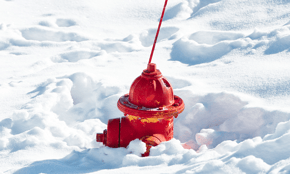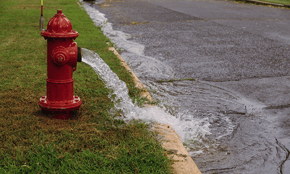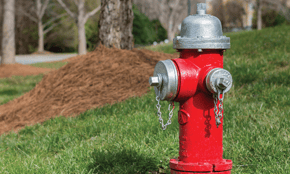The Importance of Seasonal Fire Hydrant Maintenance
- Home
- Team EJP Blog
- The Importance of Seasonal Fire Hydrant Maintenance
- Nov 4, 2021 8:03:16 AM
- Everett J. Prescott
As the seasons change, one thing remains the same – the importance of fire hydrant safety and maintenance.
Fires are destructive, unpredictable, and downright dangerous. Being prepared is the least you can do. Some key steps are as follows: ensuring you have an emergency exit plan established, functional and up-to-date smoke detectors, cleaned chimney and furnace, proper disposal of ashes from stoves (ashes should be stored in a metal container with a metal lid and disposed of only when completely extinguished), and maintaining fire hydrants. Below is a breakdown of our recommendations for hydrant safety and service throughout each season.
Fall
As the chill begins to flow through the breeze, carrying with it the many shades of autumn leaves, there are a few cold-weather culprits that can spell chaos for your local fire hydrants. Not only are the dropping temperatures a concern, but the leaves and other debris building up around the hydrant can cause trouble too. Regularly cleaning around the hydrant can keep it easily accessible and thus easier for firefighters in the future. Keeping a watchful eye on temperatures and hydrants can be helpful in scheduling maintenance should a hydrant with residual water freeze.
Winter

In winter, the most common factors that will affect a fire hydrant’s performance are cold weather and heavy snow. The cold temperatures can freeze hydrants –especially those with aboveground nozzles; the heavy snow, if left to sit, can build up around the hydrant which creates a barrier between firefighters and the life-saving water supply. One way that communities have found to consistently monitor hydrants is by “adopting” one for the season. By adopting a hydrant, communities vouch to regularly monitor the selected hydrant for damage and obstructions.
Spring

As spring interrupts the bitter cold with glimpses of warm weather, people begin to adventure outside more and for longer periods of time. When outdoor activities increase, so does vandalism... hydrants can be subject to this, especially during the peak season. Spring is also peak season for rainstorms which can lead to problems with stability and sinkholes around hydrants. This makes the season an optimal time to get out for annual in-depth checkups to make sure hydrants are ready in case of emergency.
Summer

Summer brings with it heat, sunshine, and, in some cases, drought. Drought can be a major problem, especially when firefighters are relying on the water flow to put out fires. If the water pressure is not as high as it should be, trouble can follow. To best prevent this frustration and safety concern, the water pressure should be checked. If it is not up to the standard, then cities or municipalities may order a major repair job. Another piece to inspect for is if the hydrant has been tampered with or used for any unintended purposes.
Each season brings a different element into the mix, but the most important task that communities can do is to monitor and maintain these hydrants regularly so that, when needed, the hydrants will be working properly and sufficiently. The last thing you want is to be surprised by hydrant troubles while trying to extinguish a fire and provide aid to others. In the case of fire hydrant maintenance and safety, it is best to be proactive versus reactive.








